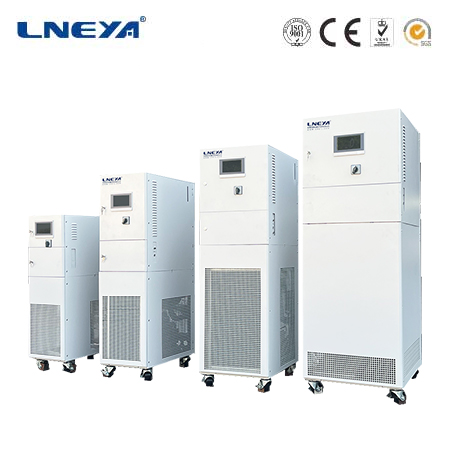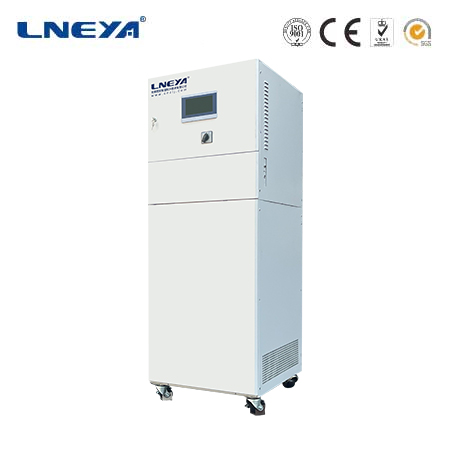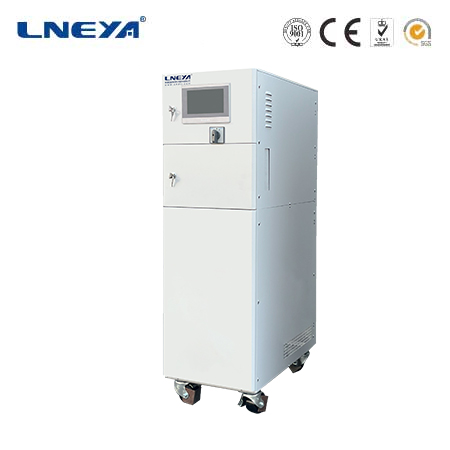lab chillers
Lab Chillers: A Comprehensive Guide
Lab chillers are specialized cooling systems designed to provide accurate and stable temperature control in laboratory environments. These chillers play a vital role in a wide array of scientific research, analysis, and experimentation, ensuring that samples, reagents, and equipment are maintained at optimal temperatures. Whether it’s for cooling reaction vessels in chemical synthesis, preserving biological samples in life – science research, or maintaining the stability of sensitive analytical instruments, lab chillers are indispensable tools that contribute significantly to the accuracy and success of laboratory work.

Working Principles of Lab Chillers
Refrigeration Cycle Basics
Lab chillers operate on the fundamental principles of the refrigeration cycle, which involves four main components: the compressor, condenser, expansion valve, and evaporator. The cycle starts with the compressor, which raises the pressure and temperature of the refrigerant gas. This high – pressure, high – temperature refrigerant then flows into the condenser. In the condenser, the refrigerant releases heat to the surrounding environment or a cooling medium, such as air or water, causing it to condense into a high – pressure liquid.
The high – pressure liquid refrigerant then passes through an expansion valve, where its pressure drops suddenly. This pressure reduction causes the refrigerant to evaporate and cool down significantly. The low – temperature, low – pressure refrigerant then enters the evaporator. In the evaporator, heat is absorbed from the medium that needs to be cooled, such as a sample or a cooling coil connected to laboratory equipment. As the refrigerant absorbs heat, it evaporates back into a gas, and this gaseous refrigerant is then drawn back into the compressor to start the cycle anew.
Heat Transfer in Lab Chillers
Heat transfer is a key process in lab chillers. There are three main mechanisms of heat transfer: conduction, convection, and radiation. Conduction occurs when heat is transferred directly through physical contact between materials. For example, in a chiller connected to a reaction vessel, heat from the warm contents of the vessel is conducted through the metal walls of the vessel to the cooler surface of the chiller’s cooling coil.
Convection involves the transfer of heat through the movement of fluids. In lab chillers, a coolant fluid, often water or a glycol – water mixture, is circulated through the system. As the fluid passes through the evaporator, it absorbs heat from the refrigerant and becomes heated. The heated fluid is then pumped away from the evaporator, and cooler fluid takes its place, creating a continuous convection current that helps distribute the heat throughout the system for efficient removal.
Radiation, though less significant in lab chillers compared to conduction and convection, also contributes to heat transfer. The heated surfaces of the chiller components can emit infrared radiation, which can transfer heat to nearby objects or the surrounding air. However, proper insulation and design of the chiller help minimize heat loss through radiation.
Types of Lab Chillers
Recirculating Chillers
Recirculating chillers are one of the most common types used in laboratories. They feature a closed – loop system where a coolant fluid, usually water or a glycol – water solution, is continuously circulated. These chillers are ideal for applications that require a stable supply of cooled fluid to multiple devices or processes within the lab. For instance, in a biochemistry lab, a recirculating chiller can supply cooled water to a series of centrifuges, preventing overheating and ensuring accurate sample separation.
Recirculating chillers often come with adjustable temperature controls, allowing users to set the desired coolant temperature precisely. They may also have features like flow rate control and built – in sensors to monitor and maintain the quality of the coolant, such as checking for low levels or changes in conductivity.
Benchtop Chillers

Benchtop chillers are compact, space – saving units designed for use directly on laboratory benches. They are suitable for applications that require a smaller cooling capacity and are ideal for individual experiments or for cooling small – scale equipment. For example, in a microbiology lab, a benchtop chiller can be used to cool a small incubator or to maintain the temperature of a water bath used for culturing sensitive microorganisms.
These chillers typically have a simple user interface for easy temperature adjustment and monitoring. They are often quieter in operation compared to larger chiller models, making them suitable for labs where noise levels need to be minimized. Some benchtop chillers may also be portable, allowing researchers to move them between different workstations as needed.
Large – Scale Centralized Chillers
In larger laboratories or research facilities with multiple labs and high – cooling demands, large – scale centralized chillers are employed. These chillers are capable of providing substantial cooling capacity to meet the needs of numerous pieces of equipment simultaneously. They are usually installed in a dedicated mechanical room or an outdoor location and are connected to various lab areas through a network of pipes and valves.
Centralized chillers can be either air – cooled or water – cooled. Air – cooled centralized chillers use fans to dissipate heat into the ambient air, while water – cooled ones transfer heat to a separate water loop, which may then be cooled in a cooling tower. These chillers are often controlled by sophisticated management systems that can optimize energy consumption based on the actual cooling load of the labs, adjusting the chiller’s operation in real – time to ensure efficient and cost – effective cooling.
Applications of Lab Chillers
Chemical Laboratories
In chemical laboratories, lab chillers are used in a variety of applications. During chemical synthesis, many reactions are exothermic, generating a significant amount of heat. Chillers are used to cool reaction vessels, preventing the temperature from rising too high and potentially causing unwanted side reactions or even hazardous situations. They also help maintain the stability of sensitive reagents and solvents, ensuring that they remain in the correct physical state for accurate reactions.
In analytical chemistry, chillers are essential for cooling components of instruments such as gas chromatographs and liquid chromatographs. Cooling these instruments helps improve their sensitivity and accuracy, ensuring reliable results when analyzing chemical samples. For example, in mass spectrometry, the cooling of ion sources and detectors using lab chillers can enhance the detection of trace compounds.
Biological and Life – Science Laboratories
In biological and life – science labs, lab chillers play a crucial role in preserving the viability of biological samples. For storing cells, tissues, and biological fluids, chillers maintain the low temperatures required to prevent degradation and maintain the integrity of cellular components. In processes like DNA extraction and protein purification, chillers are used to cool buffers and reagents, ensuring that enzymes and other biological molecules remain active and functional.
Chillers are also used in the operation of equipment such as refrigerated centrifuges, which separate biological samples based on their density at low temperatures. Additionally, in cell culture labs, chillers help maintain the temperature of incubators and water baths, creating an optimal environment for cell growth and proliferation.
Material Science Laboratories
In material science research, lab chillers are used to study the thermal properties of materials. For example, when testing the behavior of materials under low – temperature conditions, chillers can cool the testing chambers or samples to the desired temperature. They are also used in processes such as cryogenic grinding, where materials are cooled to extremely low temperatures to make them brittle and easier to grind into fine powders for further analysis.
In the production of new materials, such as polymers and composites, chillers help control the cooling rate during the solidification process. This precise control over the cooling rate can influence the microstructure and properties of the final material, allowing researchers to tailor the material’s characteristics to specific applications.
Selection Criteria for Lab Chillers
Cooling Capacity
Determining the appropriate cooling capacity is the most critical factor when selecting a lab chiller. It is essential to accurately calculate the total heat load that the chiller needs to handle. This includes considering the heat generated by laboratory equipment, such as heaters, ovens, and analytical instruments, as well as any heat that may be introduced from the surrounding environment. An undersized chiller will not be able to provide sufficient cooling, leading to overheating of samples or equipment, while an oversized chiller will result in higher costs and unnecessary energy consumption.
Temperature Range
Different laboratory applications require specific temperature ranges. Some experiments may need extremely low temperatures close to absolute zero, while others may only require moderate cooling. It is crucial to choose a chiller that can cover the required temperature range with the necessary precision. For example, in cryogenic research, a chiller capable of reaching temperatures well below -100°C may be required, while a general – purpose lab chiller for cooling reaction vessels may only need to maintain temperatures between 0°C and 20°C.
Compatibility

The compatibility of the chiller with the laboratory’s existing equipment and the substances being used is also important. The coolant used in the chiller should not react with or contaminate the samples or reagents. For instance, if the lab works with sensitive biological materials, a chiller using a non – toxic and biocompatible coolant, such as propylene glycol, would be a better choice. Additionally, the chiller should be compatible with the plumbing and electrical systems of the laboratory to ensure easy installation and operation.
Energy Efficiency
Energy efficiency is a significant consideration, especially for labs that operate chillers continuously. Look for chillers with high – efficiency ratings, such as a high Coefficient of Performance (COP). Energy – efficient chillers not only help reduce operating costs but also have a lower environmental impact. Features like variable – speed compressors and intelligent control systems that can adjust the chiller’s operation based on the actual cooling demand can further enhance energy savings.
Noise Level
Since laboratories are often environments where quiet operation is preferred, the noise level of the chiller can be an important factor. Benchtop chillers, in particular, should have low noise emissions to avoid disturbing the work environment. When evaluating chillers, check the manufacturer’s specifications for noise ratings and consider visiting a demonstration or reading user reviews to get a better sense of the chiller’s actual noise levels during operation.
Installation, Maintenance, and Safety Precautions
Installation
Proper installation of lab chillers is essential for their optimal performance and longevity. The installation process should be carried out following the manufacturer’s instructions carefully. For benchtop chillers, ensure that they are placed on a stable, level surface with sufficient clearance around them for proper ventilation. This helps prevent the chiller from overheating due to poor air circulation.
For larger recirculating or centralized chillers, professional installation may be required. This includes proper connection of the coolant pipes, ensuring that there are no leaks and that the flow direction is correct. Electrical connections should be made by qualified electricians, following local electrical codes and safety standards. Additionally, if the chiller uses a water – cooling system, proper installation of the water supply and drainage lines, as well as any associated water – treatment equipment, is necessary to prevent scaling and corrosion.
Maintenance
Regular maintenance is crucial to keep lab chillers running smoothly. Routine tasks include checking the coolant level and quality regularly. For glycol – based coolants, it may be necessary to test the concentration periodically and replenish or replace the coolant as needed to maintain proper freeze protection and heat – transfer efficiency.
Inspect the chiller’s filters, if applicable, and clean or replace them according to the manufacturer’s recommendations. Clogged filters can restrict the flow of coolant or air, reducing the chiller’s performance. Check the refrigerant levels and pressures, and if any abnormalities are detected, contact a qualified technician for inspection and repair. Lubricate any moving parts, such as pumps and fans, to ensure smooth operation and extend their lifespan.
Safety Precautions
When using lab chillers, several safety precautions should be observed. Since chillers often use refrigerants, which can be hazardous if leaked, ensure that the chiller is installed in a well – ventilated area. In case of a refrigerant leak, follow the proper procedures for containment and cleanup, and contact a professional to repair the leak promptly.
Electrical components in chillers pose a risk of electric shock. Always ensure that the chiller is properly grounded and that any electrical work is carried out by qualified personnel. When handling the coolant, especially if it contains glycol, wear appropriate personal protective equipment, such as gloves and goggles, as glycol can be harmful if it comes into contact with the skin or eyes.
In conclusion, lab chillers are indispensable assets in modern laboratory settings. Understanding their working principles, types, applications, selection criteria, and aspects related to installation, maintenance, and safety is essential for researchers and lab technicians to make the most of these cooling systems. By carefully considering these factors, laboratories can ensure accurate and reliable results in their experiments, protect valuable samples and equipment, and contribute to the advancement of scientific research.
Related recommendations
chilling unit operation
645Chilling Unit Operation: Understanding the Basics and Beyond Chilling units play a critical role in a wide range of cooling applications, from food processing to industrial processes. These uni...
View details5 hp water chiller
4455 HP Water Chiller: Specifications and Applications In industrial settings, water chillers are indispensable for controlling temperatures in processes such as plastic injection molding, chemica...
View detailsvapour compression chiller
206Working PrincipleThe operation of a vapour compression chiller is centered around the vapour compression refrigeration cycle, which consists of four main stages involving four key components: the...
View detailscirculating water bath heater
655Circulating Water Bath Heaters: Precision Temperature Control for Diverse Applications Introduction to Circulating Water Bath Heaters Circulating water bath heaters play a crucial role in va...
View details
 LNEYA Thermal Test Chillers
LNEYA Thermal Test Chillers







HelloPlease log in